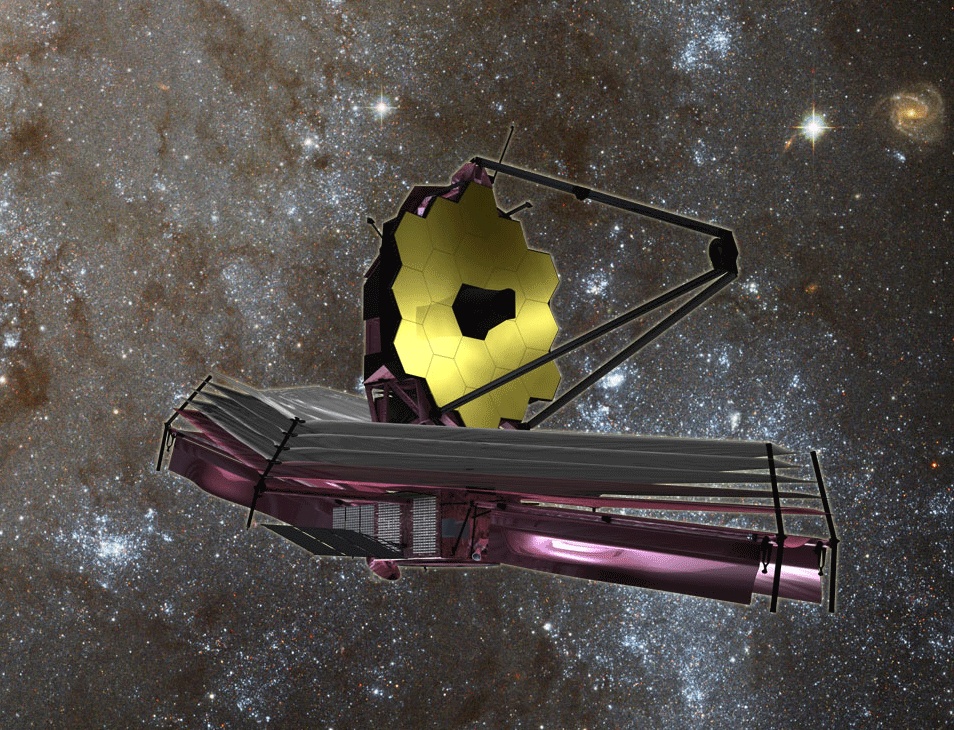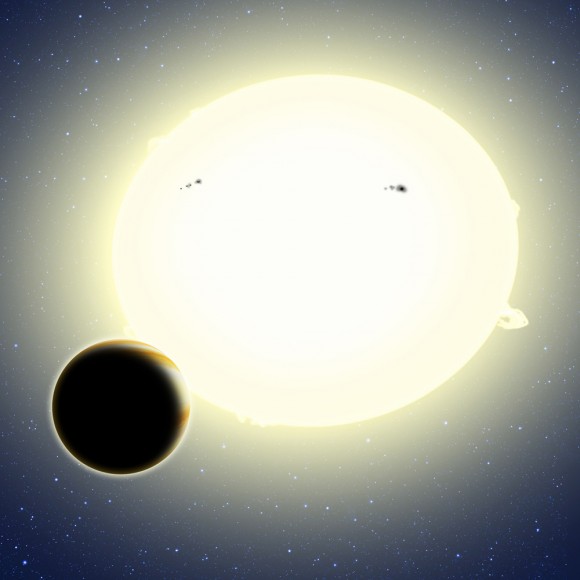Science
Related: About this forumNew way to find exoplanets
“Einstein’s planet,” formally known as Kepler-76b, is a “hot Jupiter” that orbits its star every 1.5 days. Its diameter is about 25 percent larger than Jupiter and it weighs twice as much. This artist’s conception shows Kepler-76b orbiting its host star, which has been tidally distorted into a slight football shape (exaggerated here for effect). The planet was detected using the BEER algorithm, which looked for brightness changes in the star as the planet orbits due to relativistic BEaming, Ellipsoidal variations, and Reflected light from the planet. Credit: David A. Aguilar (CfA)
A new method of detecting alien worlds is full of awesome, as it combines Einstein’s Theory of Relativity along with BEER. No, not the weekend beverage of choice, but the relativistic BEaming, Ellipsoidal, and Reflection/emission modulations algorithm. This new way of finding exoplanets was developed by Professor Tsevi Mazeh and his student, Simchon Faigler, at Tel Aviv University, Israel, and it has been used for the first time to find a distant exoplanet, Kepler-76b, informally named Einstein’s planet.
The new method looks for three small effects that occur simultaneously as a planet orbits the star. A “beaming” effect causes the star to brighten as it moves toward us, tugged by the planet, and dim as it moves away. The brightening results from photons “piling up” in energy, as well as light getting focused in the direction of the star’s motion due to relativistic effects.
Read more: http://www.universetoday.com/102112/using-the-theory-of-relativity-and-beer-to-find-exoplanets/#ixzz2TDAJCFyB
truedelphi
(32,324 posts)Planets is that I am using a different BEER algorithim.
I use the one that combines nicely with tequila shots but doesn't do much for space exploration.
Thor_MN
(11,843 posts)longship
(40,416 posts)They'll be tidally locked (most likely), massive, and with short periods of revolution. We won't be finding many Earth sized planets with BEER, nor likely with beer. (hic!)
Still, it's cool to see yet another observing technique. Can hardly wait for the new generation optical telescopes to have first light.
I give you... The Thirty Meter Telescope!

Cool! Eh?
Victor_c3
(3,557 posts)Just for ha-has, here is a list of the largest telescopes (and future telescopes) in the world:
http://en.wikipedia.org/wiki/Extremely_large_telescope
I believe that the VLT is made up of 4x 8.2 meter telescopes.
I wonder how the images from all of these compare to what they can gather from the Hubble (which is a 2.4 meter telescope)...
longship
(40,416 posts)It takes out the fuzziness caused by atmospheric turbulence. Ground based scopes of the current generation are already rivaling Hubble. The next gen scopes coming up will be able to eclipse (so to speak) the Hubble in capabilities. That's why they build them where they do, high in the Atacama desert in the Andes, on top of Mauna Kea, on a mountain top in the Canary Islands, etc.
The ALMA array, a radio telescope, is at over 15,000 feet in the Atacama!!
But in a few years we'll have the James Webb Space Telescope up there. At 6.5 meters it will blow away Hubble and will operate in the infrared. It's cool looking, too.

Victor_c3
(3,557 posts)You just sparked me to read a up on some of these modern telescopes.
Apparently, with adaptive optics, the TMT will be 100x more sensitive than the Hubble ![]()
Perhaps I'm just boring and thinking too small, but I'd love to see what a shot of Jupiter with it's Galilean moons marching across would look like with something like that. That was one of my favorite things to watch with my little 4" telescope.
longship
(40,416 posts)And clear skies to you.
I have a cool 10" Dobsonian mounted reflector. Haven't used in a while, but it's nice.
